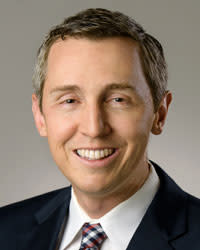Financial Advice Across Borders




Terry Ritchie
Partner
Cardinal Point Wealth
Matt Cavalho
CIO
Cardinal Point Wealth
Globalization is no longer a buzzword but a fact of life. More people than ever before live in one country and work, retire—or invest—in another.
But taking one's finances over the border isn't easy. Between immigration law, differing tax regimes and uneven access to social programs like universal health care or Social Security, it can become incredibly complex to reconcile the finances of someone living in two countries (or more).
Enter Cardinal Point Wealth. With offices in both Canada and the U.S., this $500 million RIA specializes in serving clients living in both countries, or who are moving from one country to the other.
ETF.com recently sat down with Terry Ritchie, partner of Cardinal Point Wealth and director of cross-border wealth services, and Matt Carvalho, Cardinal Point's CIO, to discuss some of the unique challenges—and opportunities—of cross-border financial planning.
ETF.com: Roughly how many of your clients have a dual-country living situation?
Terry Ritchie: The majority of our clients all have some U.S.-Canada connection. Many of them are citizens of Canada from way back when. We also have clients who might choose to be snowbirds and sunbirds, meaning they live in Canada for the summer months, then move to Texas or so on for the winter months.
People often ask if it's about Trump or not. Before he became president, there was that whole discussion of, "If he wins, we're moving to Canada!" But we didn't see that wave of folks coming up.
ETF.com: It's a lot harder to financially uproot your life than people might've realized.
Ritchie: Yes. And there are immigration rules, too. You can't just cross the border and say, "I live here now; I'm going to work here and get free health care." There's a process.
So that's not the main reason people move. But we do have a number of clients who, from a lifestyle perspective, want to live in Canada. Our job as planners is to make sure they understand what they're getting into.
For example, the tax environment in Canada is very different than it is in the U.S.; if you're going to have socialized health care, you have to pay for it. Currency is a big issue, too. The Canadian dollar likes to go up and down a bit. So to the extent that the client has U.S. dollars coming in, they can enhance their lifestyle [because of the exchange rate]. But we also have people moving to the U.S., but with Canadian dollars and Canadian sources of income. So that can be a challenge.
ETF.com: You must have to implement a fair bit of currency hedging for your clients.
Matt Carvalho: It's certainly a big topic for our clients who are dual citizens, or who were in one location and headed to another. We do a fair amount of hedging on our Canadian dollar portfolios, because you just have so much more exposure to currency risk there.
But with other clients, we also discuss a schedule of dollar-cost averaging to spread out the impact over a couple of years or so, because we don't feel we can predict where the dollar’s going to move.
Ritchie: It's hard to peg where we think the domestic equity markets are going to be, much less where we think the dollar’s going to go.
Carvalho: Dealing with currency is a big part of our practice, because it has so many potential impacts on health care, retirement pension schemes, and so on.
ETF.com: How did you get into serving dual-residency clients?
Ritchie: The majority of us live it ourselves. I was raised in Canada, but my mother was an American. In the ’70s, we moved down to Arizona. I never expected I'd return to Canada, but in 1995, I moved back because I discovered I had an affinity to work with Canadians.
Doing what we do, we don't have much competition. Some large Canadian banks try to do this, but they don't do it very well. And they can't, from a regulatory perspective.
ETF.com: You'd think a large bank would be able to handle dual-country clients. What's preventing them from being able to do it effectively, and why are you able to do what they can't?
Ritchie: There's a liability aspect to it. Plus, we're financial planners first; investment is only one part. We deal with immigration issues, tax issues, moving their stuff from here—vehicles, furniture, money.
We answer questions like, "If I'm moving from Canada to the U.S., and I've never paid into Medicare or Social Security, how am I going to get health care?" Or, if I'm moving to Canada, can I still benefit from Social Security? Or, if I've got beneficiaries in Canada but all my stuff is in Arizona, how do I tax effectively get it from here to there?
It's all part of a comprehensive financial plan.
ETF.com: About how much of your firm's assets is invested in ETFs?
Carvalho: About two-thirds. Ideally, we'd like to use 100% on the ETF side. But there are some managers we like that are only available in the mutual fund space. Plus, some positions have large embedded gains in them. So we're trying to nudge that percentage up over time.
Also, we face a unique circumstance [with our clients]. Say you're a resident of the U.S. who has retired up to Canada, but you have a 401(k) in U.S. dollars. Well, we have to utilize different types of vehicles, because most mutual funds do not want nonresident investors to hold them.
So when you reregister your address, we have to make sure you're using 100% ETFs (though for U.S. residents investing in U.S. dollars and Canadian residents investing in Canadian dollars, we can still use some mutual funds).
ETF.com: Why can't Canadian investors hold U.S. mutual funds, and vice versa?
Ritchie: From the IRS' perspective, Canada is considered an offshore jurisdiction, and Canadian mutual funds are what's known as a PFIC: a "passive foreign investment company." PFICs don't have the same type of tax reporting as domestic mutual funds or ETFs, so there are some onerous tax implications for U.S. investors owning PFICs.
If an American living in Canada owns a PFIC that pays out a dividend, it's not treated by the IRS the same way as a dividend [from a U.S.-based fund]. If it's a PFIC, it can be taxed at the highest margin rates for U.S. investors, and then it becomes a fairly onerous process from a tax perspective.
ETF.com: So not only does the investor get slammed by taxes, they'll have to fill out a bunch of paperwork about it.
Ritchie: Exactly. You have to fill out what's called a Form 8621. If you've got a dozen of these PFICs in your portfolio, you have to fill out a dozen of these forms. It's a lot of work, and it can be expensive to get that tax work done.
We recognize that. We make sure we use investments that are consistent, so that if investors get a dividend, it's going to be treated like a dividend. When Matt builds out our portfolios, these tax implications are a big part of the decision-making process—and ETFs are a big part of that.
ETF.com: Do you use Canadian ETFs as well?
Carvalho: Yes, we do. On the Canadian side, you have many of the same players—Vanguard, iShares and so on—but you also have many Canadian banks, like RBC or Bank of Montreal. There are slightly smaller players as well, like CI First Asset or SEI, even Purpose Investing, which is more niche. Overall, though, the market is definitely converging toward that of the U.S.
Ritchie: In Canada, we tend to lag what the U.S. is doing by about five years. So for many years, the cost of investing in Canada was far higher than it was in the U.S., in terms of expense ratios and so on. But because of the growth of the ETF environment, we're seeing some of those costs come down, and we're also seeing some of the bigger players come in, like Vanguard.
For us, it's great. We can utilize their products in both the U.S. and Canadian models, and it's nice to be able to keep things consistent across the board.
So if we can't hold certain mutual funds in a taxable account in Canada, we can transfer those assets to an ETF on a tax-favored basis, then migrate the ETF to Canada and hold it in the U.S. citizen's account without worrying about the implications when they move to Canada.
ETF.com: So ETFs don't count as PFICs?
Ritchie: There's a bit of a gray area, but if the underlying company is domiciled in Canada, effectively it's considered a PFIC.
ETF.com: What is one ETF that you wish were available to you, but isn't yet?
Carvalho: We use a wide variety of broad market exposure, some of the broad market beta funds. But I think some more actively managed funds, or even more long/short ETFs, would be some nice complements. They'd be useful for us to avoid mutual funds entirely.
ETF.com: Are you interested at all in the nontransparent active structures that have recently been approved?
Carvalho: We'll certainly take a look at them. Transparency isn't the highest thing for us. For us, it's making sure the fund is liquid and that the tax impacts are going to be lowered through the ETF structure. So we'd certainly be open to options like this.
ETF.com: What is your typical dual-country client most afraid of right now?
Carvalho: If there’s going to be a recession.
A lot of clients are asking whether Trump is going to do something that can derail the entire world economy, and we have to step back and say, "The president only has so much power." [What he does is] meaningful, but it's only one piece.
ETF.com: Then again, J.P. Morgan just created a "Volfefe Index" to track how much impact he has on the markets.
Carvalho: I saw that. Still, we always try to step back and say to clients, "We're doing this for decades to come." I mean, other clients were worried when Obama got elected, eight years before him.
So we just go back to the investment policy statements, and restate what we're doing for the long term. What happens in the next year or two is probably not that impactful.
Contact Lara Crigger at lcrigger@etf.com
Recommended Stories
